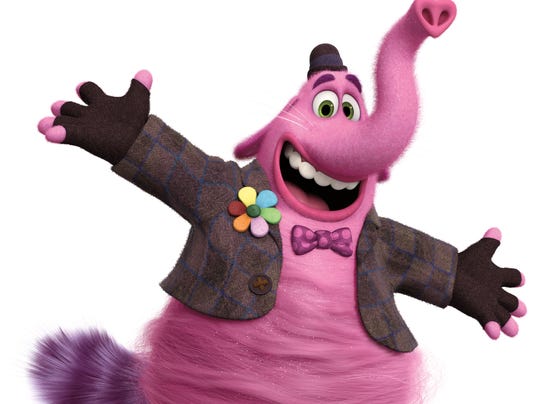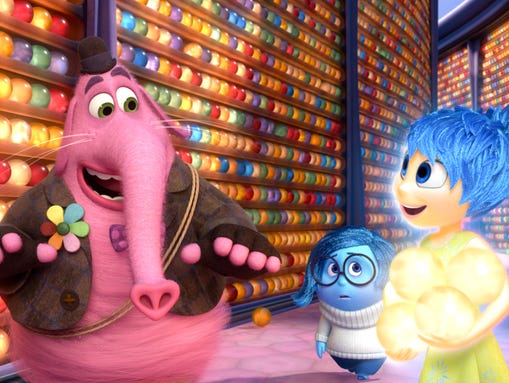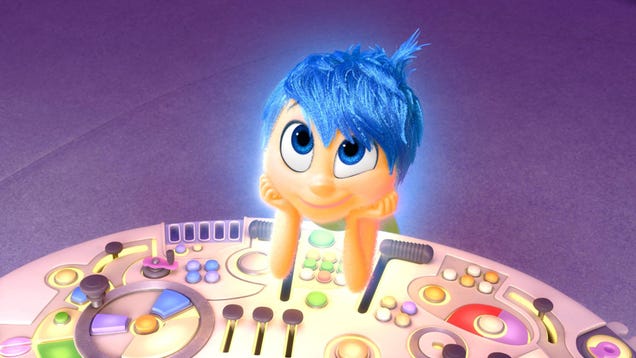Many rookie screenwriters, especially
those making the transition from novels, believe that they need to
give their characters emotional “depth.” They believe that giving
characters complex and conflicting emotions is they key to creating a
memorable and successful screenplay.
The new Pixar movie Inside Out knocks out that idea faster than Ronda Rousey does to her opponents.
Each primary character portrays – literally- a single emotion.
Although the animation is 3-D, the characters are emotionally
one-dimensional. The script, written by Pete Docter and Ronnie Del
Carmen, shows that characters don't need a great deal of emotional
depth if they have strong enough desires.
Emotion, Space and Time
One of the problems with investing a
character in a screenplay with emotional depth comes from the limited
space and time you have to tell your character's story. A standard
feature screenplay should come in between 90 and 100 pages. Some
readers and producers will check to see how long the script is before
they even read it, so you don't have pages to waste on how the
character feels about every aspect of her life. In only 94 minutes,
Inside Out told a powerful story, with memorable characters and
impactful moments, so make every line count.
Desire Reveals Emotion
When you instill a desire in a
character, the nature of that desire will reveal the character's
emotional depth, without the need for lengthy monologues or boring
exposition. In Inside Out, Joy's main desire is to get back to
HeadQuarters and take back control of Riley's emotions. Sadness'
primary goal is to be part of the team, despite Joy's efforts to
exclude her. Bing Bong, Riley's childhood imaginary friend, wants to
reunite with Riley and pick up where their relationship left off.
Victory vs. Energy
In an earlier post, I discussed the
VOTE outline.
- V for Victory
- O for Obstacles
- T for Tactics
- E for Energy
When it comes to finding a character's
strongest desire, the Victory and Energy go hand-in-hand. The Victory
is always a concrete goal or aspiration, while the Energy provides
the emotional fuel that drives the pursuit of that Victory. For Joy,
the Victory is to get back to HeadQuarters, while her need to keep
Riley happy provides the Energy. For Sadness, the Victory is helping
both her and Joy get back to HQ, with her need to feel relevant and
contribute to Riley's emotional balance gives her Energy.
Pursuit Forces Change
The pursuit of any goal forces the
character into changing their actions, beliefs and attitudes. If
you've ever studied for a test, tried to lose weight, or attempted to
overcome a crippling fear, you understand that the pursuit of those
goals forces you to change. Sadness' desire to feel relevant causes
her to reach out to the despondent Bing Bong, which helps her realize
her potential for the first time. Joy's attempts to leave the Memory
Dump, and the loss of Bing Bong, bring about her change from
perpetually happy to strong and determined.
Actions Create Depth
The most effective way to create
emotional depth for your characters in such a limited space comes
from having them take actions that push them well outside their
comfort zones. The time-worn writing cliches of “show, don't tell”
and “actions speak louder than words”, while annoying, are also
highly useful. If you want to show the depths of a character's
emotions, show how far they're willing to go (or how low they're
willing to sink) to achieve their heart's desire.
Story Into Screenplay Loyal Reader Discount
If your heart's desire is to write a
killer screenplay, you don't need to go to the same extreme lengths
to which you'll push your characters. Just send an email to
storyintoscreenplayblog(at)gmail(dot)com with the subject “Loyal
Reader Discount” for a FREE one-hour consulting session.
During this session, we will discuss
your screenwriting background, education, accomplishments and goals.
I'll share with you my approach to screenwriting, which focuses on
creating memorable characters that producers will want to read,
actors will want to portray, and audiences will want to see.
After your free session, you'll also
qualify for continuing sessions at a 20 percent discount. The
standard rate for screenwriting consulting sessions is $50 per hour,
but new clients who sign up before August 31 can receive ongoing
consulting sessions for $40 per hour. You MUST schedule a paid
session before August 31 to qualify for the reduced rate.
Keep in Touch with Story Into Screenplay
You can also “Like” the Story Into
Screenplay Facebook page, follow @storyintoscreen on Twitter, check
out the YouTube channel as well as the soon-to-be-growing filmography.
If you want to read about the
adventures of another working screenwriter, check out Paul Zeidman's
blog at Maximum Z.
Drop us a line at
storyintoscreenplayblog(at)gmail(dot)com if you have any questions.
You can also sign up for your FREE initial consulting session with
the subject “Loyal Reader Discount”.





No comments:
Post a Comment